Figures
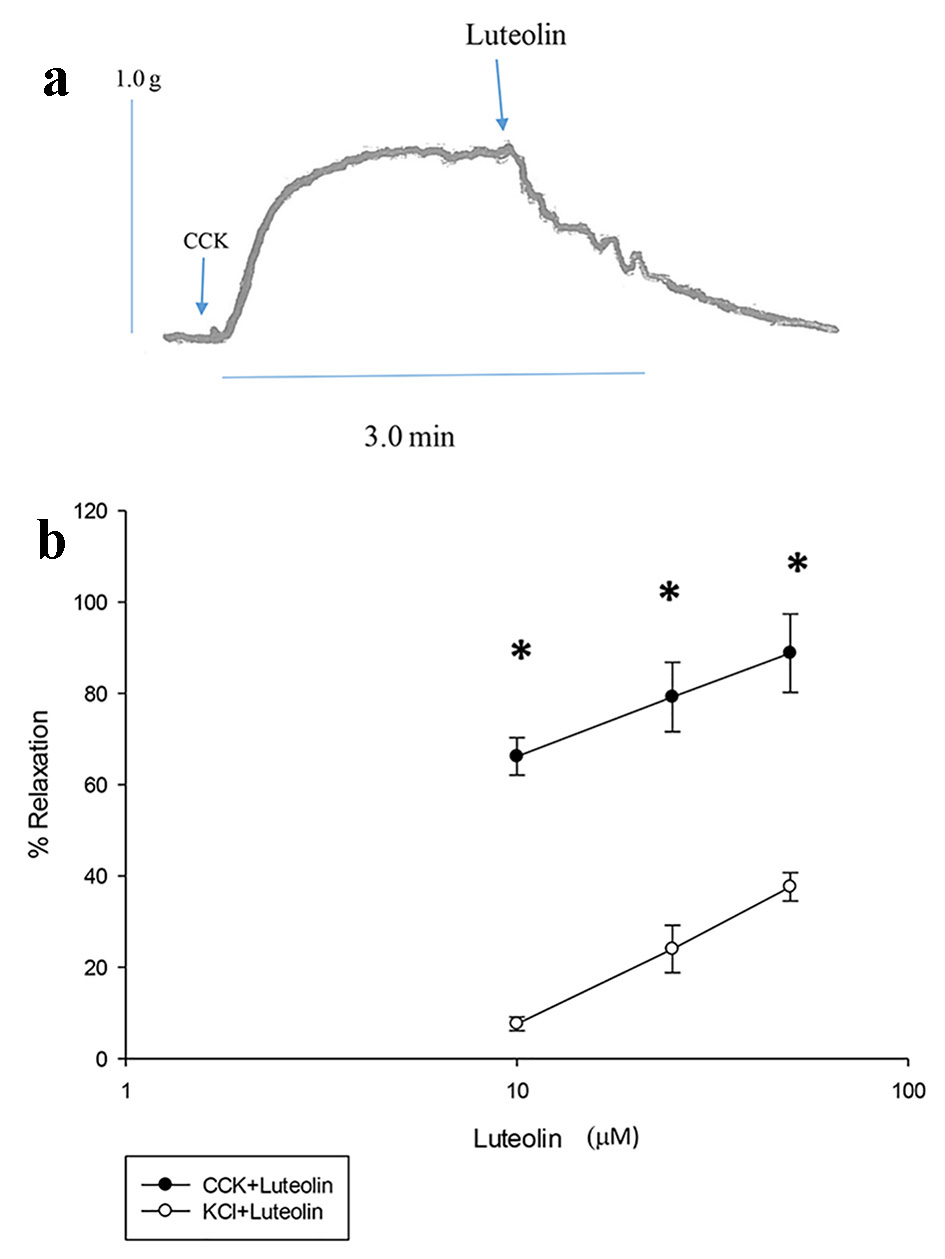
Figure 1. Effect of luteolin on CCK-induced tension (a). A data trace showing the relaxation caused by luteolin on CCK-induced tension in a male guinea pig gallbladder strip. Arrow indicates when CCK was added to the chamber (b). Luteolin was used to relax the CCK- or KCl-induced tension. The responses are concentration-dependent. Values are means ± SE.
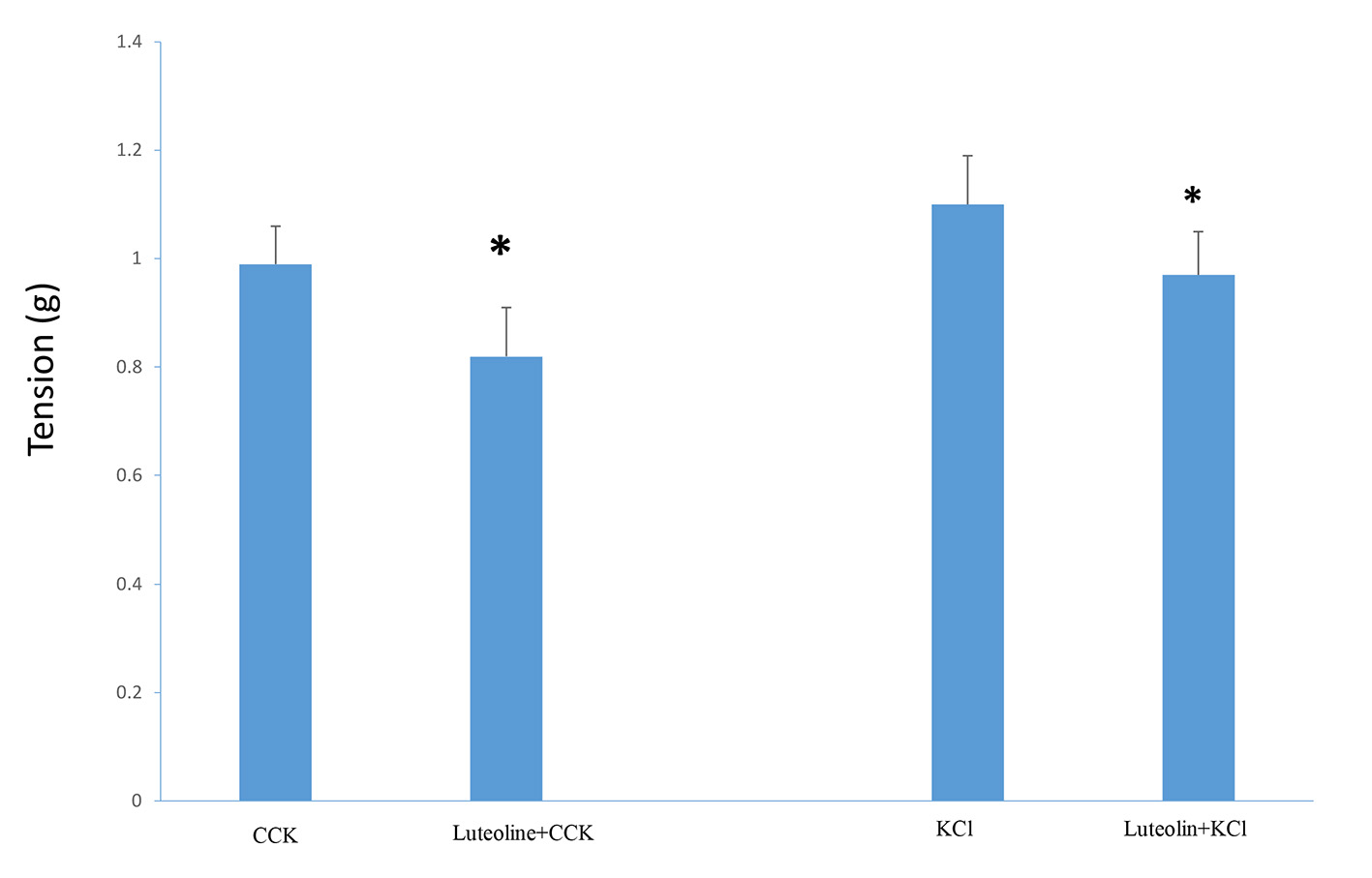
Figure 2. The effect of adding luteolin (10 µM) prior to CCK or KCl. The luteolin significantly (P < 0.001) decreased the amount of CCK-induced tension. A similar result (P < 0.001) was observed when luteolin was added to the chambers prior to KCl. Values are means ± SE.
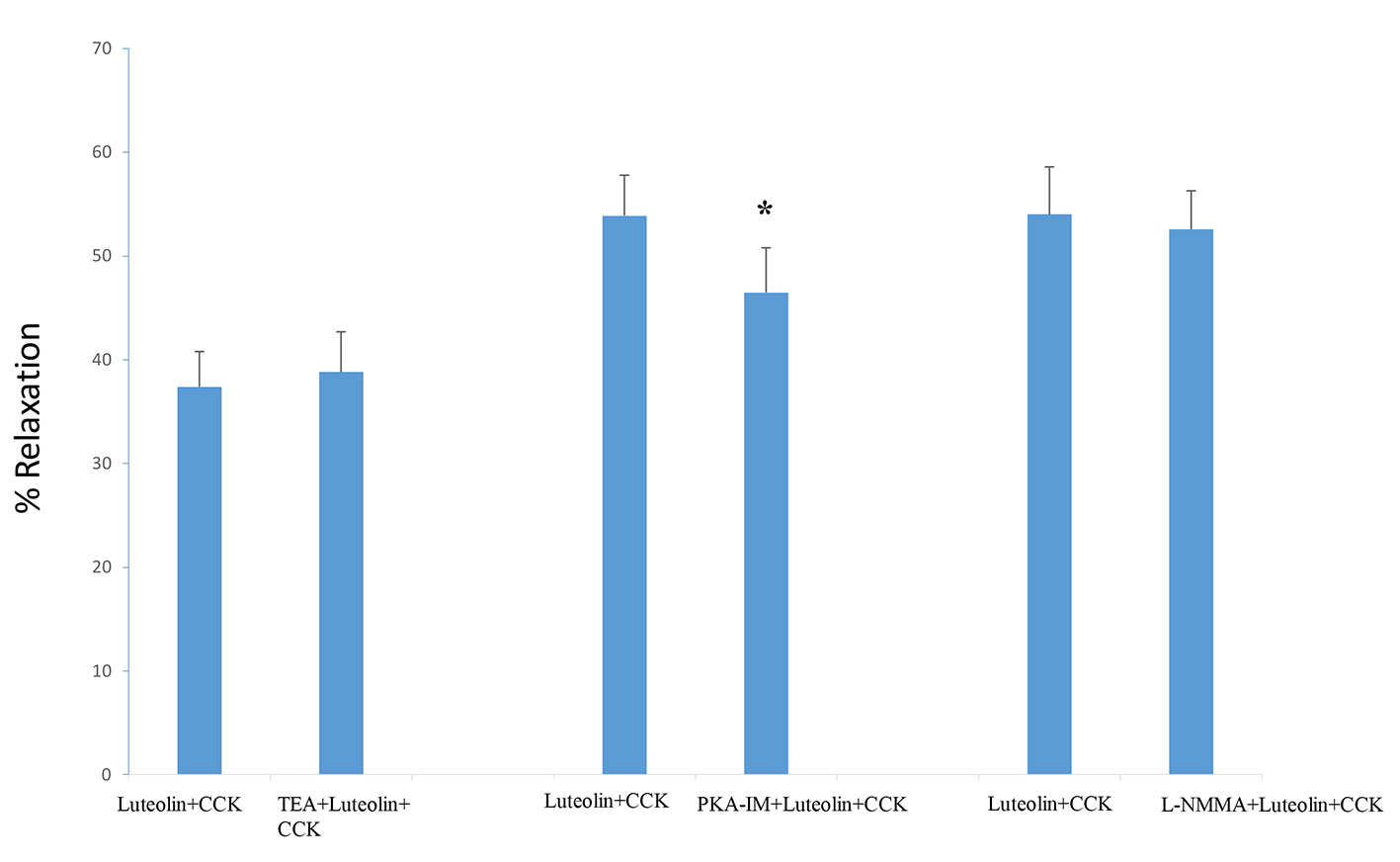
Figure 3. TEA (100 µM), a non-specific blocker of K+ channels, had no significant effect on luteolin-induced relaxation. The PKA blocker, PKA-IM (180 nM), significantly (P < 0.01) decreased the amount of luteolin-induced relaxation. The nitric oxide synthase blocker L-NAME (20 µM) had no significant effect on the amount of luteolin-induced relaxation. Values are means ± SE.
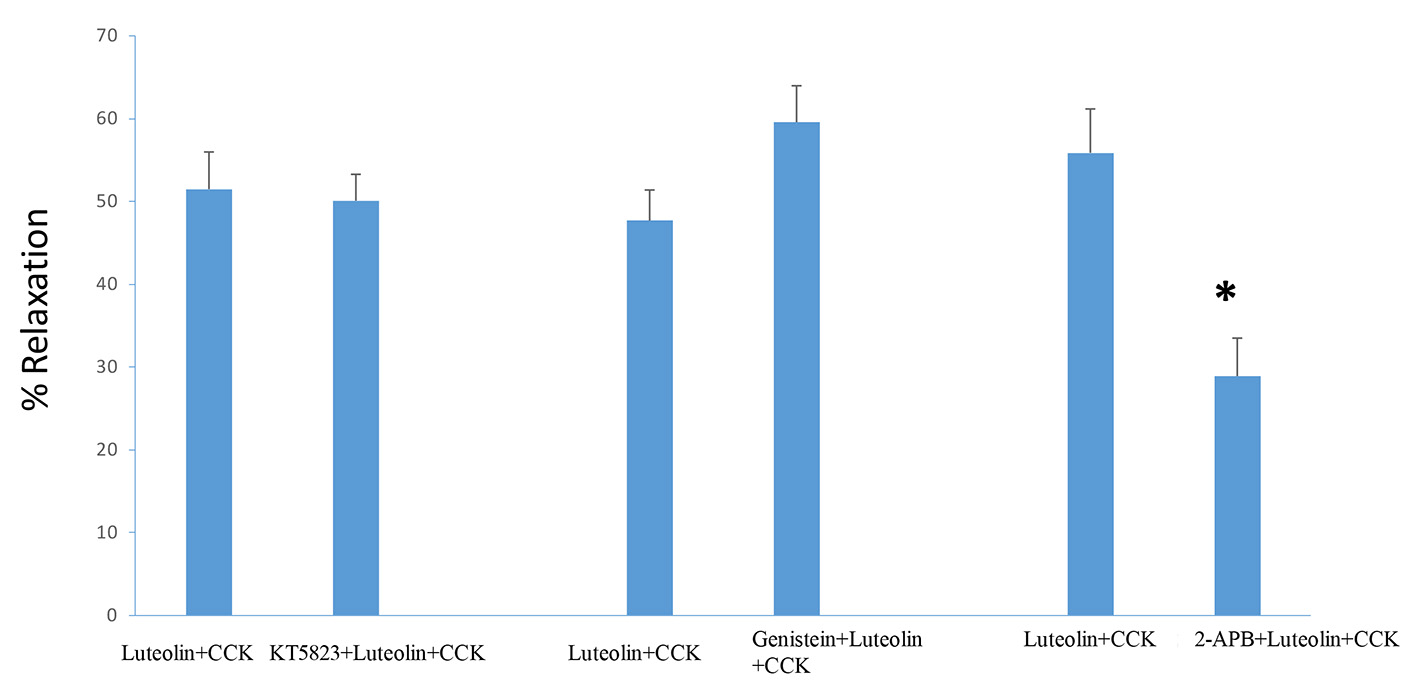
Figure 4. The effect of the PKG blocker KT5823 (585 nM) had no significant effect on the amount of luteolin-induced relaxation. Genistein (10 µM), a tyrosine kinase inhibitor, had no significant effect on the amount of luteolin-induced relaxation. The use of 2-APB (125 µM) significantly (P < 0.001) decreased the amount of luteolin-induced relaxation. Values are means ± SE.
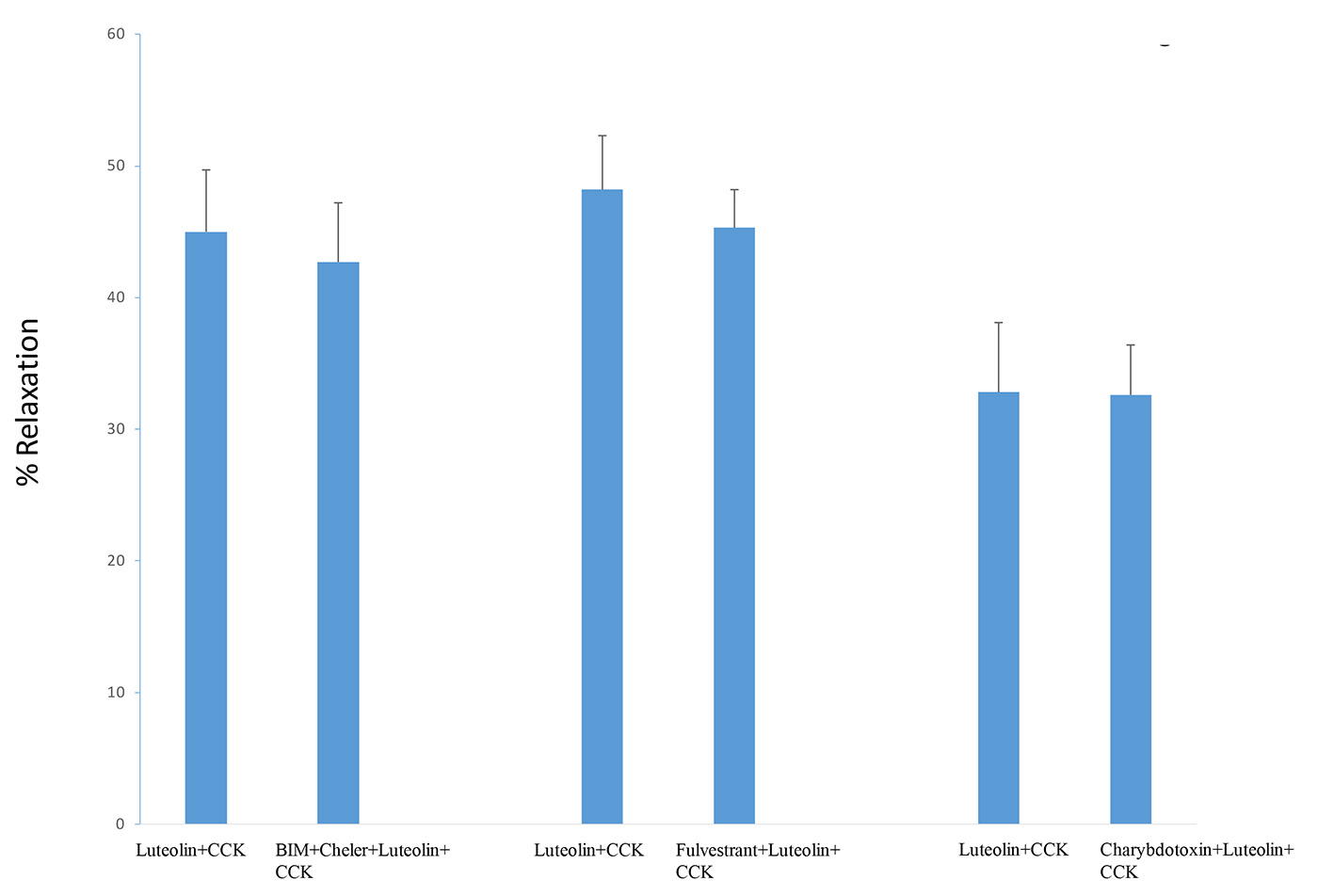
Figure 5. The use of the PKC blockers BIM (0.5 µM) and chelerythrine Cl- (5.0 µM), fulvestrant (10 µM), or charybdotoxin (5 nM) had no significant effect on the amount of luteolin-induced relaxation. Values are means ± SE.




